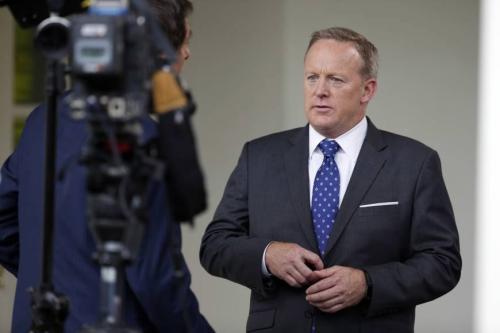US media went low-tech on Friday to cover the daily White House press briefing, after President Donald Trump's administration banned cameras from the event.
Cable news channel CNN sent sketch artist Bill Hennessy to the famous West Wing press room, a change from the American courtrooms where he normally works.
Instead of broadcasting the briefing live, CNN carried only audio of White House spokesman Sean Spicer's session with journalists. The channel then prominently featured Hennessy's sketches in its afternoon programming while stressing that cameras had not been allowed.
The Trump administration, which has a largely adversarial relationship with the media, has been restricting coverage of the White House press briefing of late, either by not holding it every day, or by banning cameras and sometimes even audio coverage.
Spicer defended the decision. "It's great for us to come out here and have a substantive discussion about policies. I don't think that the be-all and end-all is whether it's on television or not. We've made ourselves available a lot of times, and continue to do it," he said.

White House press secretary Sean Spicer does a television interview at the White House on Friday in Washington. / AP
The White House Correspondents' Association disagreed. "We believe strongly that Americans should be able to watch and listen to senior government officials face questions from an independent news media, in keeping with the principles of the First Amendment and the need for transparency at the highest levels of government," it said in a statement.
In many jurisdictions in the US and the UK, cameras are not allowed in courtrooms in order to prevent distractions and preserve privacy. In such cases, news outlets purchase visual records captured by sketch artists who attend the court as members of the public. Sometimes these artists are not permitted to sketch proceedings while in court and must create sketches from memory or notes after leaving the courtroom.
(With input from AFP)